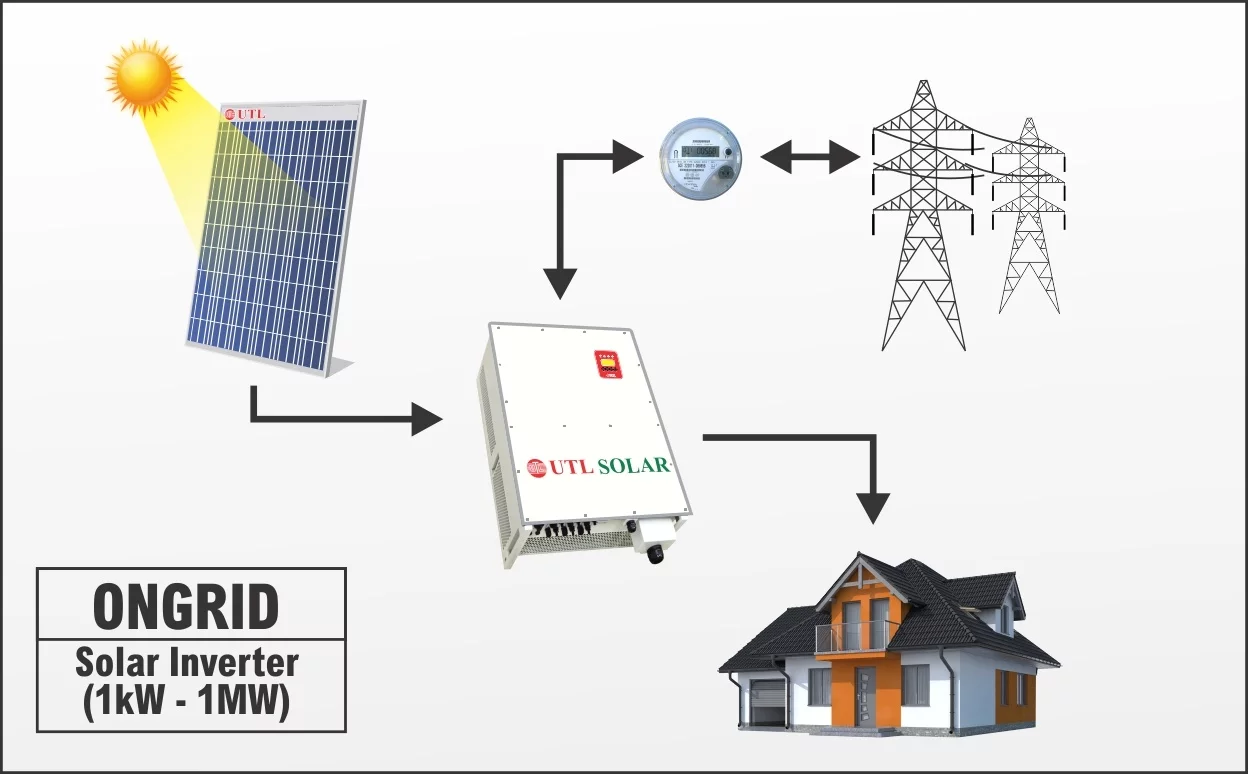On-Grid Solar System in Kerala: Harnessing Renewable Energy
What is a UTL On Grid Solar System?
A UTL On Grid Solar system is a photovoltaic (PV) system that operates in sync with the traditional power grid. It harnesses the abundant energy from the sun and converts it into usable electricity to power your home or business. Unlike off-grid systems that require batteries for energy storage, UTL On Grid Solar Systems are connected directly to the grid, allowing for a seamless integration of solar power into your daily energy consumption.

UTL On Grid Solar System Price List 2023
| Model (In kW) | Selling Price | Price/Watt |
|---|---|---|
| 1kw On Grid Solar System | Rs.64,636 | Rs.64.636 |
| 2kw On Grid Solar System | Rs.1,02,872 | Rs.51.436 |
| 3kw On Grid Solar System | Rs.1,43,308 | Rs.47.769 |
| 5kw On Grid Solar System | Rs.2,23,630 | Rs.44.726 |
| 10kw On Grid Solar System | Rs.4,20,860 | Rs.42.086 |
The Advantages of UTL On Grid Solar Systems
-
Cost-Effective: UTL On Grid Solar Systems eliminate the need for expensive battery storage, making them a more affordable option compared to off-grid systems. The net metering feature allows you to save on your electricity bills by offsetting the energy consumed from the grid with the excess energy generated by your solar system.
-
Environmentally Friendly: By harnessing the power of the sun, UTL On Grid Solar Systems produce clean and renewable energy, reducing reliance on fossil fuels. This results in a significant reduction in carbon emissions, contributing to a greener and more sustainable future.
-
Grid Reliability: Unlike off-grid systems, UTL On Grid Solar Systems are connected to the utility grid, ensuring a reliable power supply. During periods of low sunlight or high energy demand, you can seamlessly draw electricity from the grid, eliminating concerns about power shortages.
-
Financial Incentives: Many governments and utility companies offer attractive financial incentives such as tax credits, rebates, and feed-in tariffs to encourage the adoption of solar energy. These incentives can significantly reduce the upfront cost of installing a UTL On Grid Solar System, making it an even more appealing investment.
-
Increased Property Value: Installing a UTL On Grid Solar System can increase the value of your property. Potential buyers are increasingly interested in eco-friendly and energy-efficient homes, making solar installations a valuable asset.
How Does a UTL On Grid Solar System Work?
A UTL On Grid Solar System comprises three main components: solar panels, an inverter, and the utility grid. The solar panels, also known as photovoltaic modules, consist of solar cells that convert sunlight into direct current (DC) electricity. This DC electricity is then sent to the inverter, which converts it into alternating current (AC) electricity suitable for use in your home or business.
The electricity generated by the UTL On Grid Solar System can be used instantly to power your appliances and devices. If the system generates more electricity than what is needed, the excess is sent back to the utility grid, earning you credits through a process called net metering. During periods of low sunlight or high energy demand, electricity is drawn from the grid, ensuring a consistent power supply.
The Installation Process of UTL On Grid Solar Systems
Installing a UTL On Grid Solar System requires careful planning and professional expertise. Here's an overview of the installation process:

Step 1: Site Assessment and Design
Before installation, a solar professional will conduct a thorough assessment of your property to determine its solar potential. Factors such as roof orientation, shading, and available space will be evaluated. Based on the assessment, a customized system design will be created, ensuring maximum energy production.
Step 2: Permitting and Approvals
Obtaining the necessary permits and approvals is a crucial step in the installation process. Your solar installer will assist you in navigating the paperwork and ensuring compliance with local regulations and building codes.
Step 3: Equipment Procurement
Once the design is finalized and the permits are obtained, the solar equipment will be procured. This includes high-quality solar panels, inverters, mounting structures, and other necessary components.
Step 4: Installation
The installation team will begin by mounting the solar panels on your roof or ground-mounted structures. Wiring and electrical connections will be carefully carried out to ensure optimal performance and safety. The inverter, which converts DC electricity into AC, will be installed near the main electrical panel.
Step 5: Grid Connection
After the solar panels and inverter are installed, the system will be connected to the utility grid. A bidirectional meter will be installed to monitor the energy flow between your solar system and the grid. This meter enables accurate net metering and keeps track of your energy consumption and production.
Step 6: Testing and Commissioning
Once the installation is complete, thorough testing and commissioning will be conducted to ensure the system's functionality and safety. This includes checking the electrical connections, verifying the system's performance, and conducting any necessary adjustments.
Step 7: Activation and Monitoring
After successful testing, your UTL On Grid Solar System will be activated, and you can start enjoying the benefits of clean, renewable energy. Many systems come with monitoring tools that allow you to track your energy production and consumption in real-time, empowering you to make informed decisions regarding your energy usage.
